
QuickBooks Payroll + TSheets integration
Merging two different apps into a seamless and useful product is not an easy feat. I led the early integration work of bringing TSheet’s time tracking functionality into QuickBooks, laying the foundation of what would eventually become QuickBooks Time.

QuickBooks Payroll + TSheets integration
Merging two different apps into a seamless and useful product is not an easy feat. I led the early integration work of bringing TSheet’s time tracking functionality into QuickBooks, laying the foundation of what would eventually become QuickBooks Time.



TSheets is a cloud based time tracking tool that allows companies to track the hours worked by their employees. Managers can enter hours worked, or employees themselves could clock in and out using a kiosk or mobile phone.
QuickBooks Payroll is a cloud-based payroll software that allows businesses to pay employees, file payroll taxes and manage employee benefits and HR in one place. The software saves time by automatically calculating, filing and paying federal and state payroll taxes.
TSheets is a cloud based time tracking tool that allows companies to track the hours worked by their employees. Managers can enter hours worked, or employees themselves could clock in and out using a kiosk or mobile phone.
QuickBooks Payroll is a cloud-based payroll software that allows businesses to pay employees, file payroll taxes and manage employee benefits and HR in one place. The software saves time by automatically calculating, filing and paying federal and state payroll taxes.
TSheets is a cloud based time tracking tool that allows companies to track the hours worked by their employees. Managers can enter hours worked, or employees themselves could clock in and out using a kiosk or mobile phone.
QuickBooks Payroll is a cloud-based payroll software that allows businesses to pay employees, file payroll taxes and manage employee benefits and HR in one place. The software saves time by automatically calculating, filing and paying federal and state payroll taxes.



When TSheets was acquired by Intuit in 2018, it already had over 35,000 customers. A year after that, I joined Intuit to lead the integration effort to bring TSheets’ time tracking functionality to 1 million customers using QuickBooks Payroll.
When TSheets was acquired by Intuit in 2018, it already had over 35,000 customers. A year after that, I joined Intuit to lead the integration effort to bring TSheets’ time tracking functionality to 1 million customers using QuickBooks Payroll.
When TSheets was acquired by Intuit in 2018, it already had over 35,000 customers. A year after that, I joined Intuit to lead the integration effort to bring TSheets’ time tracking functionality to 1 million customers using QuickBooks Payroll.
How to merge 2 different applications
How to merge 2 different applications
How to merge 2 different applications
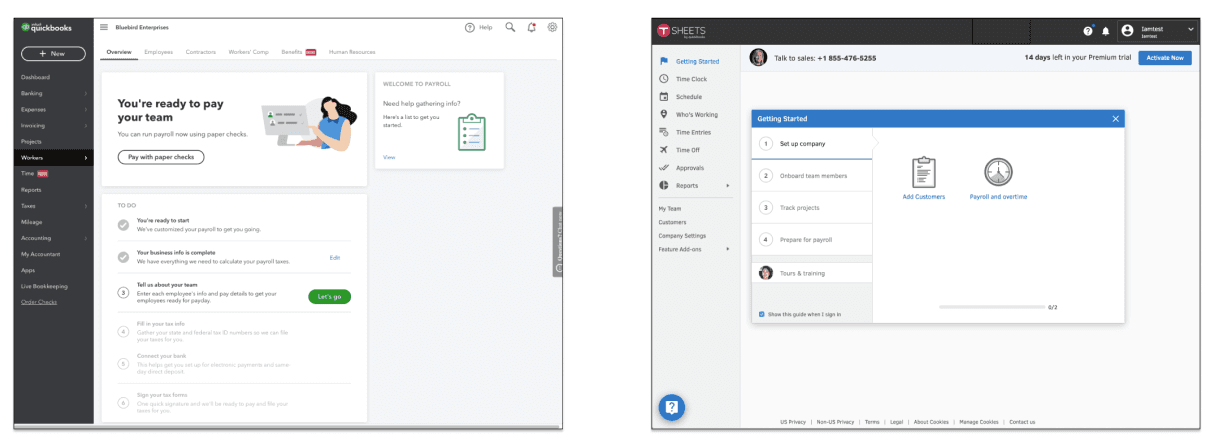


A Minimum-viable product was launched, which combined the 2 apps so that they could at a base level share employee information and time-tracking data. A cross-segment team was formed to improve this integration so that time tracking would be an integral feature of QuickBooks Payroll. I worked closely with the development and product teams to understand how these systems worked by themselves, as well as how they were built to work together. Together we learned the significant technical challenges to merging these different apps:
Interface behavior - QuickBooks presented its interface at a page level, while TSheets relied heavily on modals
Differing tech stacks and data governance caused blockages in implementation and debates about which system should be the “source of truth”
Nuances in field labels, data formats and calculation added to confusion and work needed to be done to determine which fields should be merged or eliminated
Information architecture and organization were often not 1-to-1 and needed to be reorganized so that it could fit better in the larger QuickBooks ecosystem
A Minimum-viable product was launched, which combined the 2 apps so that they could at a base level share employee information and time-tracking data. A cross-segment team was formed to improve this integration so that time tracking would be an integral feature of QuickBooks Payroll. I worked closely with the development and product teams to understand how these systems worked by themselves, as well as how they were built to work together. Together we learned the significant technical challenges to merging these different apps:
Interface behavior - QuickBooks presented its interface at a page level, while TSheets relied heavily on modals
Differing tech stacks and data governance caused blockages in implementation and debates about which system should be the “source of truth”
Nuances in field labels, data formats and calculation added to confusion and work needed to be done to determine which fields should be merged or eliminated
Information architecture and organization were often not 1-to-1 and needed to be reorganized so that it could fit better in the larger QuickBooks ecosystem
A Minimum-viable product was launched, which combined the 2 apps so that they could at a base level share employee information and time-tracking data. A cross-segment team was formed to improve this integration so that time tracking would be an integral feature of QuickBooks Payroll. I worked closely with the development and product teams to understand how these systems worked by themselves, as well as how they were built to work together. Together we learned the significant technical challenges to merging these different apps:
Interface behavior - QuickBooks presented its interface at a page level, while TSheets relied heavily on modals
Differing tech stacks and data governance caused blockages in implementation and debates about which system should be the “source of truth”
Nuances in field labels, data formats and calculation added to confusion and work needed to be done to determine which fields should be merged or eliminated
Information architecture and organization were often not 1-to-1 and needed to be reorganized so that it could fit better in the larger QuickBooks ecosystem



To get perspective on the current experience, I worked with our user experience research team to organize and facilitate in-depth interviews with customers who were using QuickBooks Payroll and TSheets together. We also sat in with our customer care representative to hear customer’s frustration first-hand. At a high level, the MVP had significant gaps that manifest in different ways:
Context switching - users have to jump between two different tools to manage payroll and manage time
Format differences, duplicate workflows and syncing issues create confusion.
Inconsistencies in the display of information across systems
To get perspective on the current experience, I worked with our user experience research team to organize and facilitate in-depth interviews with customers who were using QuickBooks Payroll and TSheets together. We also sat in with our customer care representative to hear customer’s frustration first-hand. At a high level, the MVP had significant gaps that manifest in different ways:
Context switching - users have to jump between two different tools to manage payroll and manage time
Format differences, duplicate workflows and syncing issues create confusion.
Inconsistencies in the display of information across systems
To get perspective on the current experience, I worked with our user experience research team to organize and facilitate in-depth interviews with customers who were using QuickBooks Payroll and TSheets together. We also sat in with our customer care representative to hear customer’s frustration first-hand. At a high level, the MVP had significant gaps that manifest in different ways:
Context switching - users have to jump between two different tools to manage payroll and manage time
Format differences, duplicate workflows and syncing issues create confusion.
Inconsistencies in the display of information across systems
The vision for QuickBooks Time
The vision for QuickBooks Time
The vision for QuickBooks Time
I worked with both the TSheets and QuickBooks product teams to help build a vision of how a new experience would take the features of TSheets and be seamlessly integrated into QuickBooks. After months of defining the customer problem and multiple work sessions to discuss how to create a vision for the future, we developed a clear target state that would result in a new product called QuickBooks Time.
I worked with both the TSheets and QuickBooks product teams to help build a vision of how a new experience would take the features of TSheets and be seamlessly integrated into QuickBooks. After months of defining the customer problem and multiple work sessions to discuss how to create a vision for the future, we developed a clear target state that would result in a new product called QuickBooks Time.
I worked with both the TSheets and QuickBooks product teams to help build a vision of how a new experience would take the features of TSheets and be seamlessly integrated into QuickBooks. After months of defining the customer problem and multiple work sessions to discuss how to create a vision for the future, we developed a clear target state that would result in a new product called QuickBooks Time.
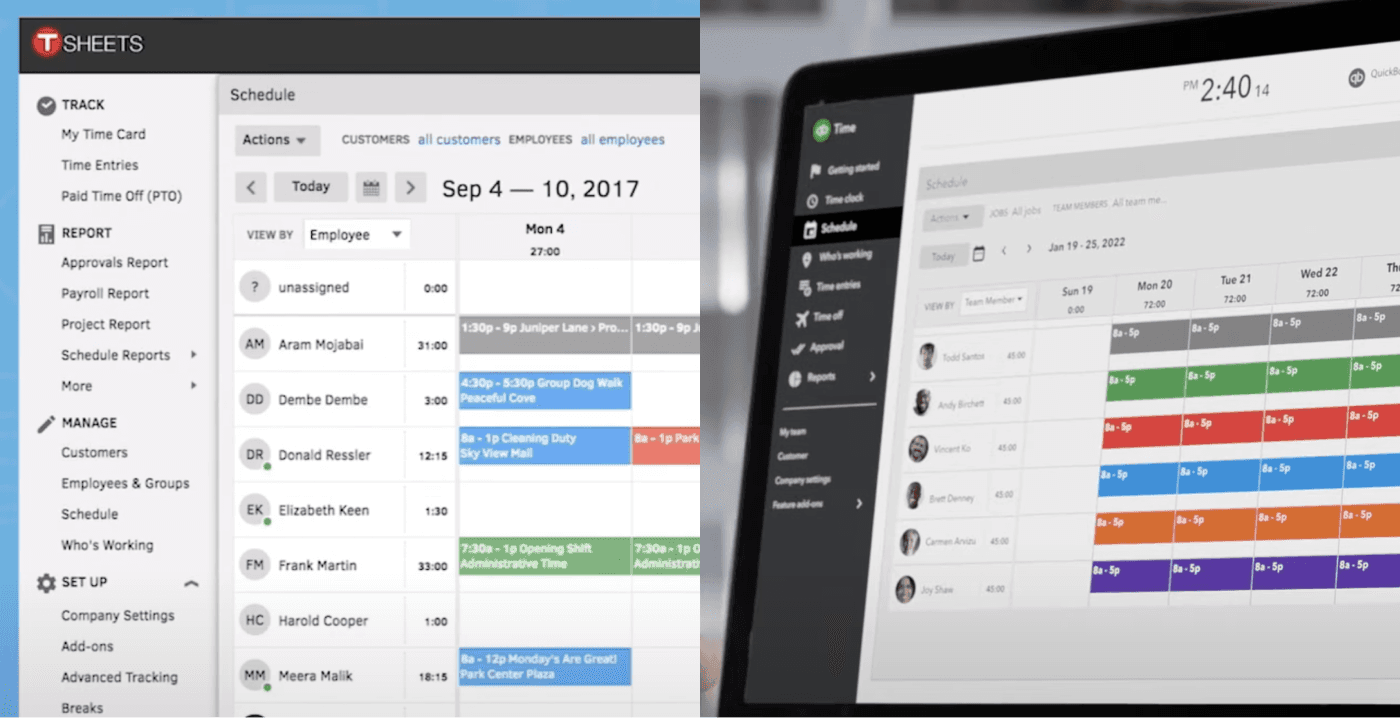


By working backwards from this large scale vision, I also outlined the first steps that would be needed to improve the experience and solve the urgent problems that customers were facing. This set the fundamental requirements towards the path of a fully successful integration and seamless customer-centered experience.
By working backwards from this large scale vision, I also outlined the first steps that would be needed to improve the experience and solve the urgent problems that customers were facing. This set the fundamental requirements towards the path of a fully successful integration and seamless customer-centered experience.
By working backwards from this large scale vision, I also outlined the first steps that would be needed to improve the experience and solve the urgent problems that customers were facing. This set the fundamental requirements towards the path of a fully successful integration and seamless customer-centered experience.
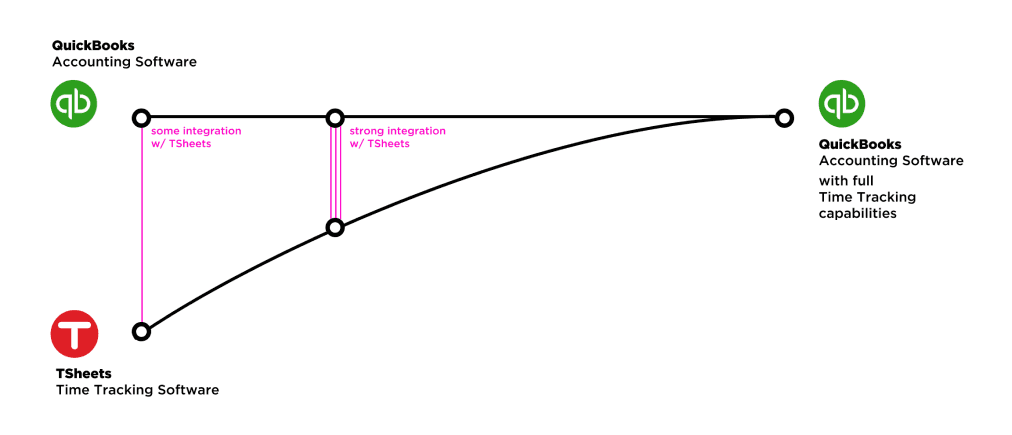


Transformation
Transformation
Transformation
In the effort to bring the 2 worlds of QuickBooks and TSheets closer together, my designs resulted in creating a strong integration where QuickBooks payroll was the source of truth, and within the TSheets interface it would be clear where employee and time information was syncing with QuickBooks.
Setup QuickBooks Payroll and TSheets Time Tracking for a New Employee
New customers setting up payroll would have to go through a long setup process in QuickBooks, and then continue to the TSheets website to complete the setup process if they wanted to take advantage of time tracking features.To make the best first impression, we eliminated duplicate steps so a majority of work in QuickBooks would automatically update in TSheets. Reducing the steps to setup resulted in overall setup time by half.
In the effort to bring the 2 worlds of QuickBooks and TSheets closer together, my designs resulted in creating a strong integration where QuickBooks payroll was the source of truth, and within the TSheets interface it would be clear where employee and time information was syncing with QuickBooks.
Setup QuickBooks Payroll and TSheets Time Tracking for a New Employee
New customers setting up payroll would have to go through a long setup process in QuickBooks, and then continue to the TSheets website to complete the setup process if they wanted to take advantage of time tracking features.To make the best first impression, we eliminated duplicate steps so a majority of work in QuickBooks would automatically update in TSheets. Reducing the steps to setup resulted in overall setup time by half.
In the effort to bring the 2 worlds of QuickBooks and TSheets closer together, my designs resulted in creating a strong integration where QuickBooks payroll was the source of truth, and within the TSheets interface it would be clear where employee and time information was syncing with QuickBooks.
Setup QuickBooks Payroll and TSheets Time Tracking for a New Employee
New customers setting up payroll would have to go through a long setup process in QuickBooks, and then continue to the TSheets website to complete the setup process if they wanted to take advantage of time tracking features.To make the best first impression, we eliminated duplicate steps so a majority of work in QuickBooks would automatically update in TSheets. Reducing the steps to setup resulted in overall setup time by half.



Sync alerts and visual cues
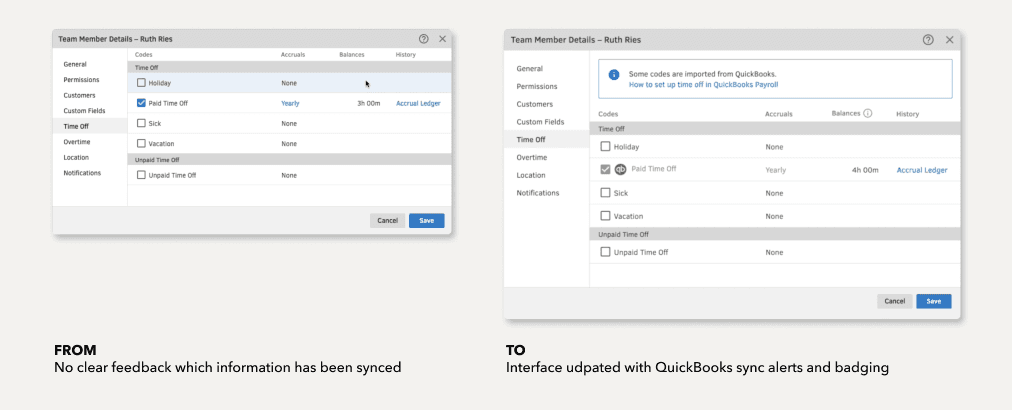


A robust syncing system highlighted the need of the user interface in both QuickBooks and TSheets to be crystal clear in which information was being shared between the two systems, and where the user should go if they need to make changes. For QuickBooks users, we highlighted areas in TSheets to make it obvious that information was synced, or that settings would need to be done in QuickBooks.
A robust syncing system highlighted the need of the user interface in both QuickBooks and TSheets to be crystal clear in which information was being shared between the two systems, and where the user should go if they need to make changes. For QuickBooks users, we highlighted areas in TSheets to make it obvious that information was synced, or that settings would need to be done in QuickBooks.
A robust syncing system highlighted the need of the user interface in both QuickBooks and TSheets to be crystal clear in which information was being shared between the two systems, and where the user should go if they need to make changes. For QuickBooks users, we highlighted areas in TSheets to make it obvious that information was synced, or that settings would need to be done in QuickBooks.
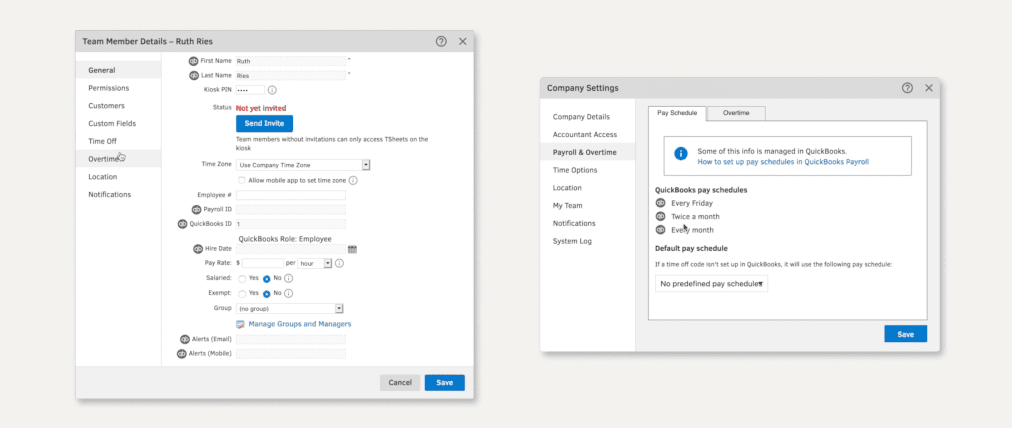


In cases where fields could only be updated in QuickBooks, they would appear disabled in TSheets and the QuickBooks logo would indicate that the information would be synced.
In cases where fields could only be updated in QuickBooks, they would appear disabled in TSheets and the QuickBooks logo would indicate that the information would be synced.
In cases where fields could only be updated in QuickBooks, they would appear disabled in TSheets and the QuickBooks logo would indicate that the information would be synced.
Team Member Export
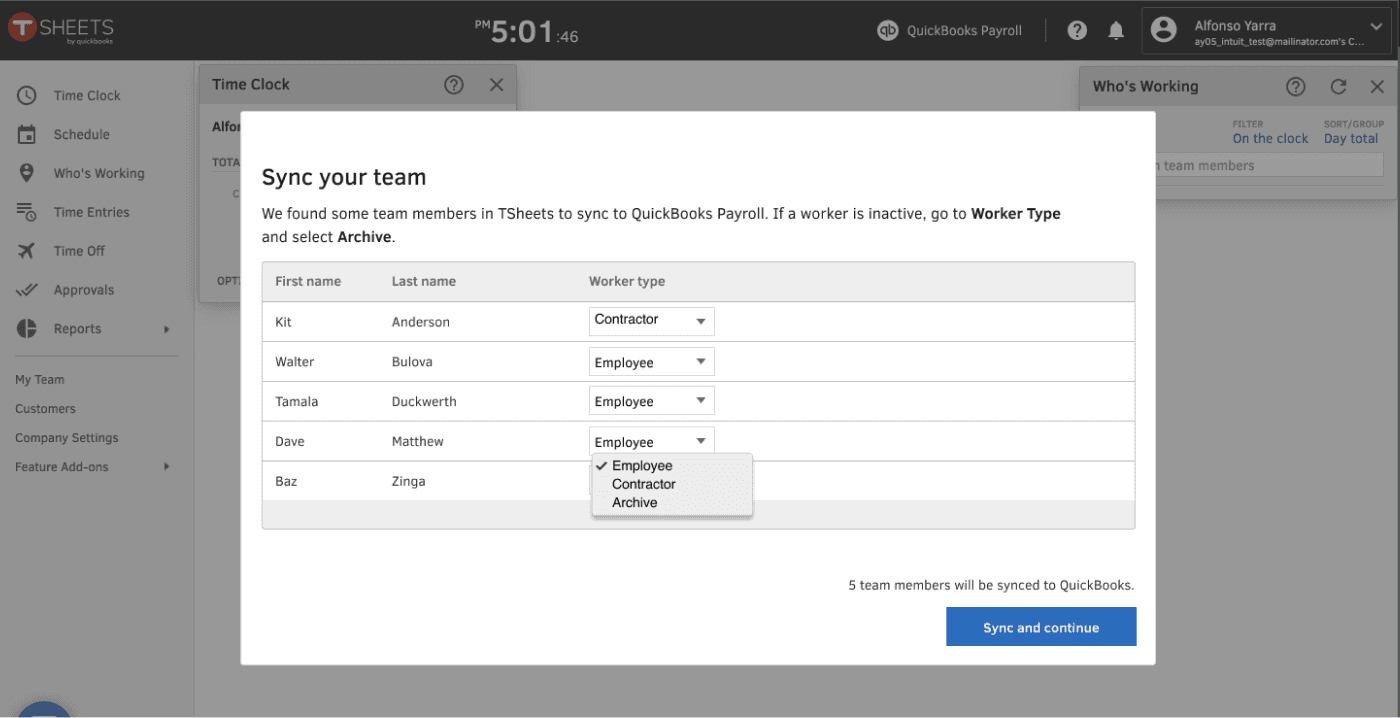


Employees that were added in TSheets would often did not appear in QuickBooks. With sync enabled, the system would detect that the employee lists did not match. In this case, a New Sync Tool was created in TSheets to allow easy export of employee information to QuickBooks.
Employees that were added in TSheets would often did not appear in QuickBooks. With sync enabled, the system would detect that the employee lists did not match. In this case, a New Sync Tool was created in TSheets to allow easy export of employee information to QuickBooks.
Employees that were added in TSheets would often did not appear in QuickBooks. With sync enabled, the system would detect that the employee lists did not match. In this case, a New Sync Tool was created in TSheets to allow easy export of employee information to QuickBooks.
Sync Transparency
When a sync event was completed, the TSheets interface provided visual cues so users would feel confident that the two systems were successfully sharing data. The detail log also helped customers view information that was synced to QuickBooks.
Sync Transparency
When a sync event was completed, the TSheets interface provided visual cues so users would feel confident that the two systems were successfully sharing data. The detail log also helped customers view information that was synced to QuickBooks.
Sync Transparency
When a sync event was completed, the TSheets interface provided visual cues so users would feel confident that the two systems were successfully sharing data. The detail log also helped customers view information that was synced to QuickBooks.
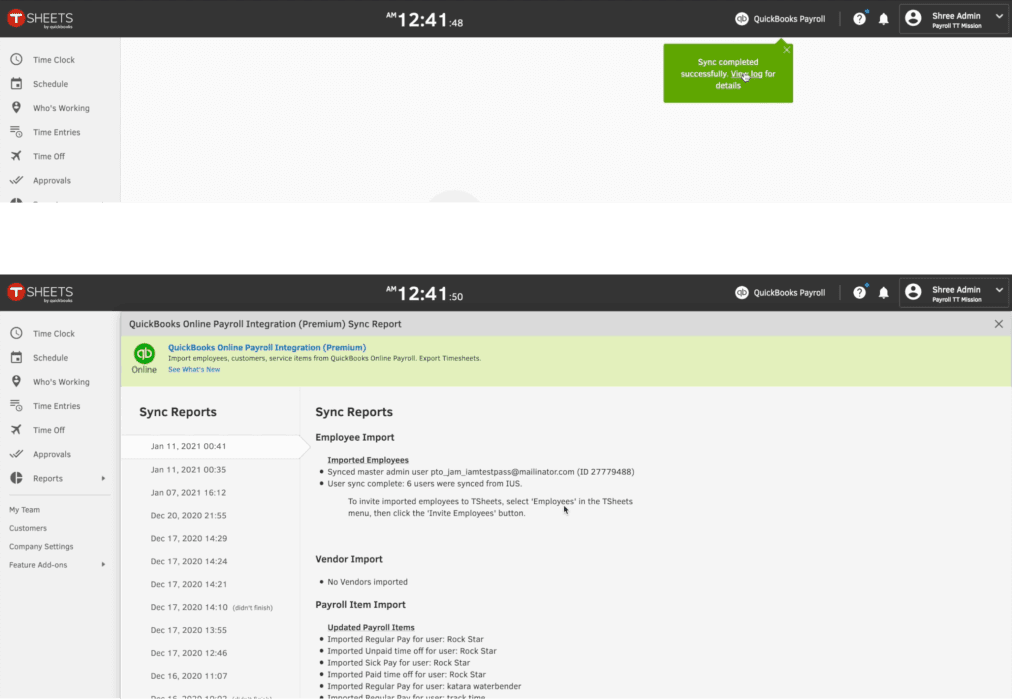


Conclusion
Conclusion
Conclusion
I love not having to leave QuickBooks to process payroll. It is so easy to process and adjust and integrates with TSheets! Streamlining with one system is great.
I love not having to leave QuickBooks to process payroll. It is so easy to process and adjust and integrates with TSheets! Streamlining with one system is great.
I love not having to leave QuickBooks to process payroll. It is so easy to process and adjust and integrates with TSheets! Streamlining with one system is great.
These changes were completed by the middle of 2020. As a result of the improved syncing and updates to the user experience, adoption of QuickBooks Payroll with TSheets increased by 22%. In addition, as a result of addressing a number critical usability issues uncovered by our in-depth customer research, we also significantly reduced the amount of customer care calls.
These changes were completed by the middle of 2020. As a result of the improved syncing and updates to the user experience, adoption of QuickBooks Payroll with TSheets increased by 22%. In addition, as a result of addressing a number critical usability issues uncovered by our in-depth customer research, we also significantly reduced the amount of customer care calls.
These changes were completed by the middle of 2020. As a result of the improved syncing and updates to the user experience, adoption of QuickBooks Payroll with TSheets increased by 22%. In addition, as a result of addressing a number critical usability issues uncovered by our in-depth customer research, we also significantly reduced the amount of customer care calls.